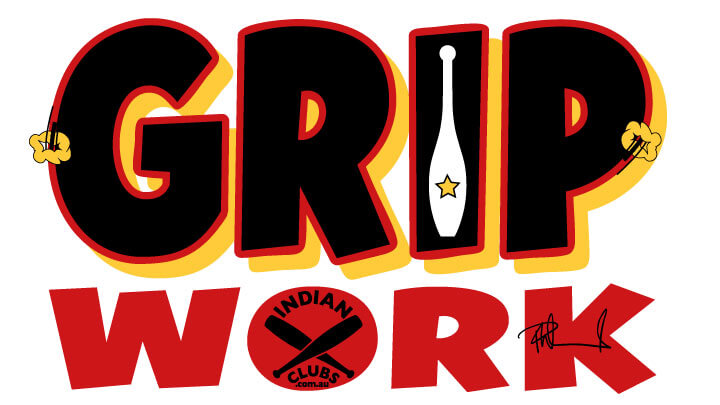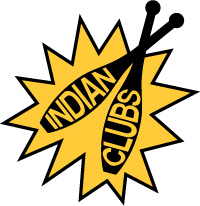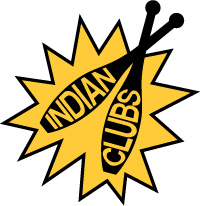Grip Work Tutorial for Indian Clubs
Grip Work. How to change grips when you swing Indian Clubs, watch the video and read the instructions below.
First a few Basics
Standard position. Stand with your feet a shoulder-width apart.
Start position. Arms bent holding your clubs in front of each shoulder. The start position uses the hammer grip.
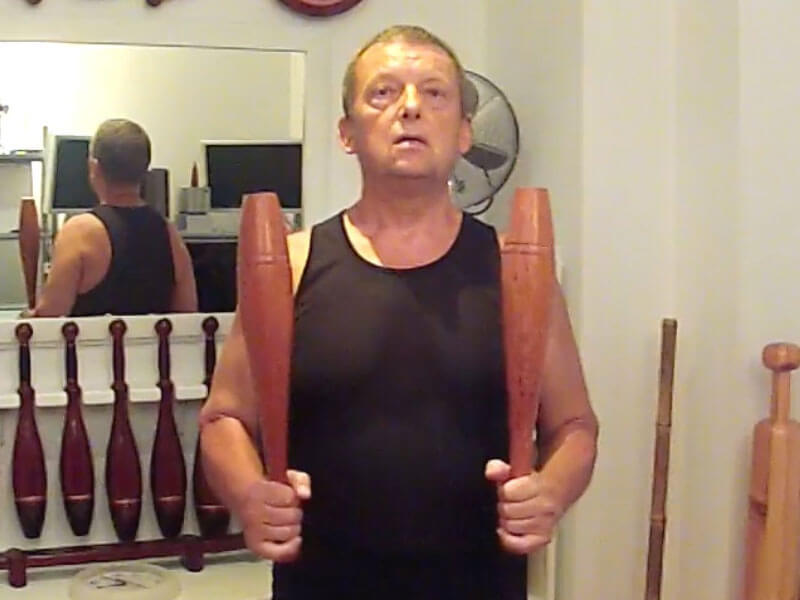
The Y position. Arms up and straight, hands holding your clubs overhead. The Y position uses the sabre grip.
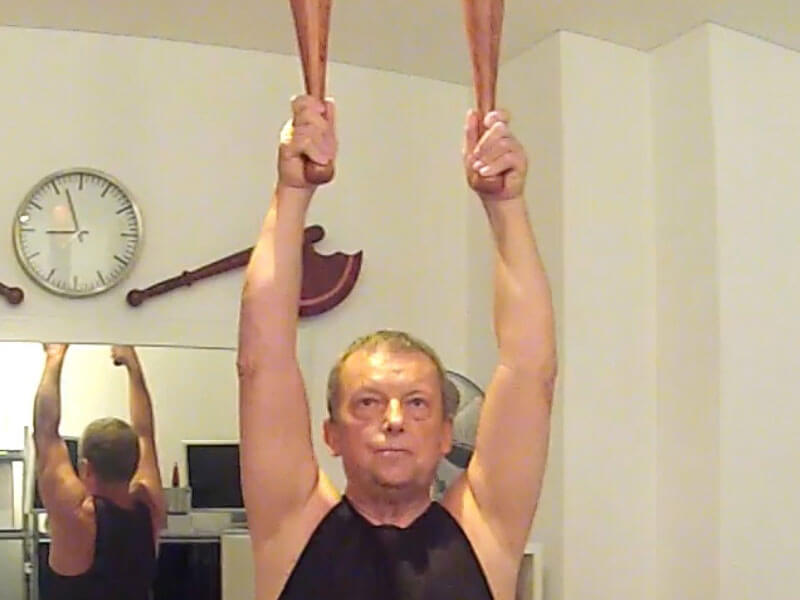
Grip Work
This tutorial will show you how and when to change your grip on the fly (transition or grip change) during a swing.
Third Finger Hinge
The third finger is the foundation of successful grip work. Starting with the hammer grip, your third finger has to slide down the handle and rest against the pommel, which acts like a hinge so you can change to the sabre grip and back to the hammer grip easily. Pinky/small finger lies on the pommel.
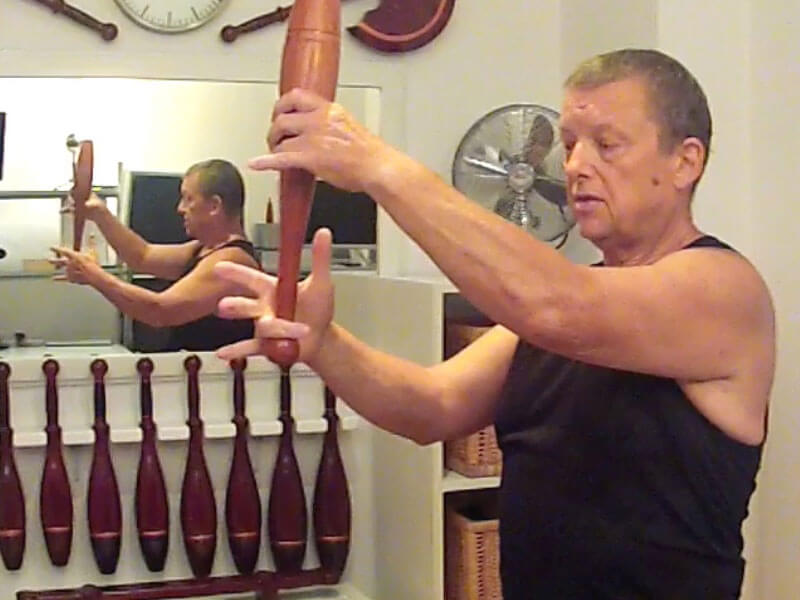
Choke the Club using Grip Work
The third grip called the Ring Grip is used to perform the back circle in the heart-shaped swing. To do this you need to choke the club, by pinching the club between your thumb and forefinger and release all other fingers, drop the club down towards the floor and hold it with your palm up.
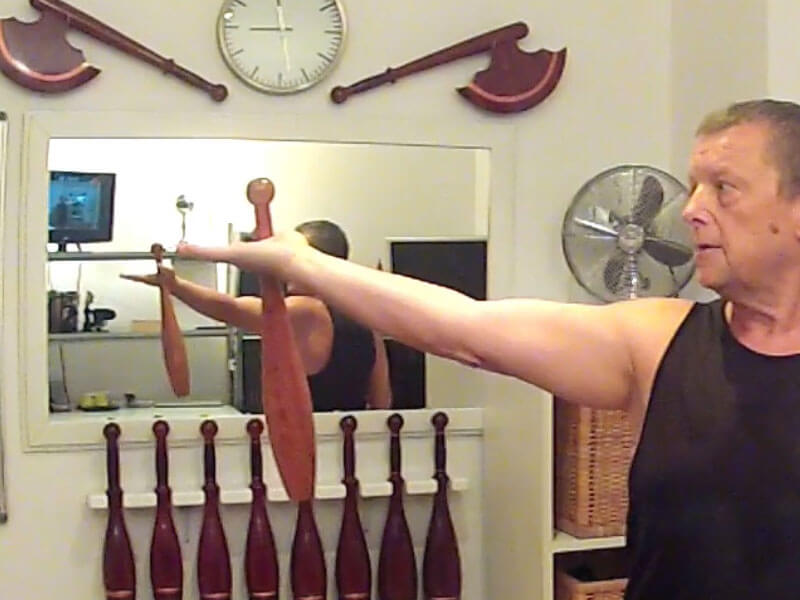
Inverted Position
Do not allow the club to slide down in the inverted position as this will prevent you from being able to swing the club back up again using your third finger as the hinge. The pommel does not touch the palm, if this happens, start again.
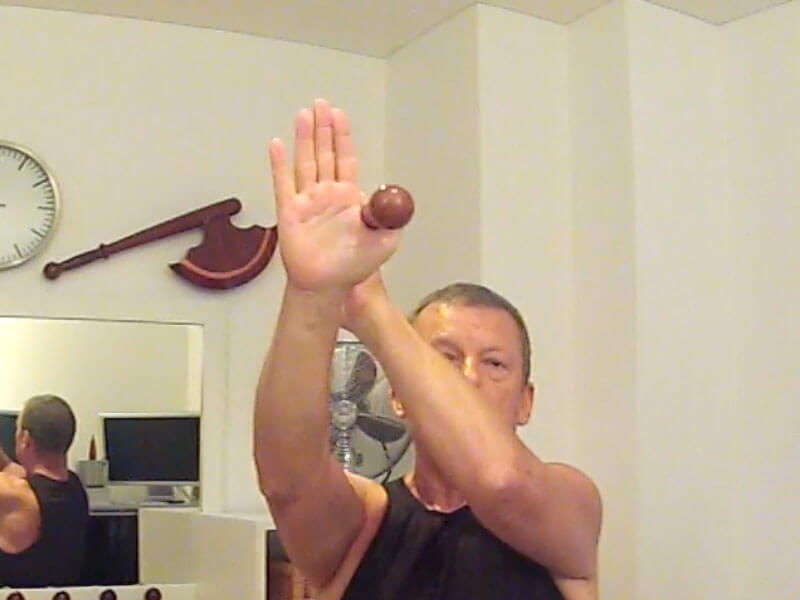
Lengthen the Club with Grip Work
The Claw Grip elongates the club by placing your palm over the pommel and gripping with your third finger which continues to act as a hinge, your forefinger and second finger act as a lever to raise the club up behind your back. NB the claw grip is the only instance that you should lay your forefinger down the handle of a club.
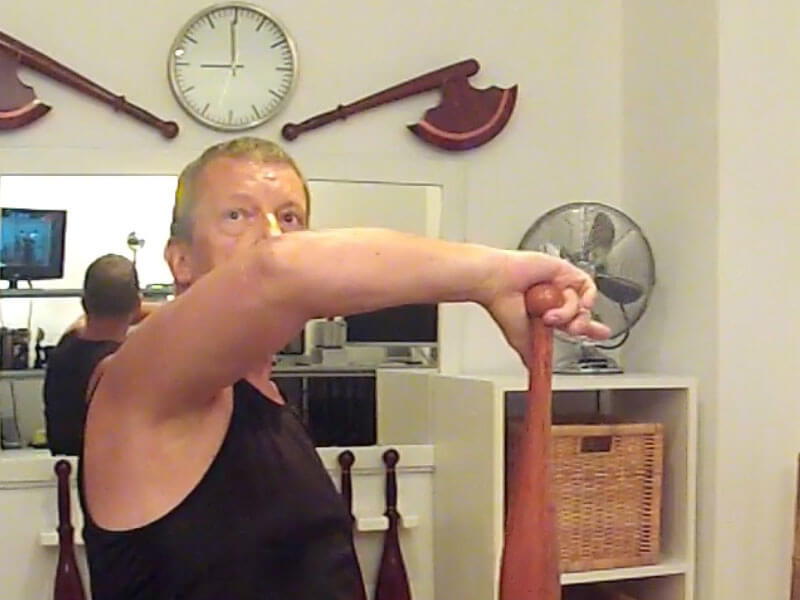
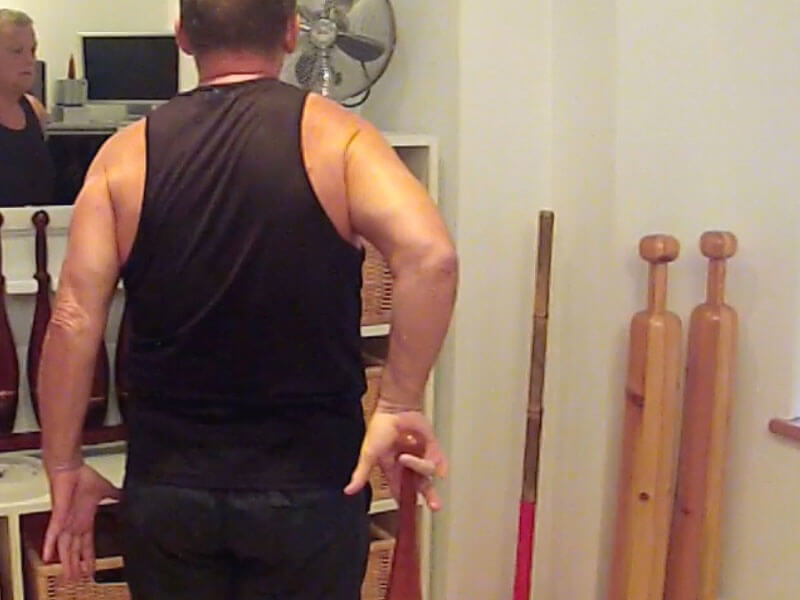
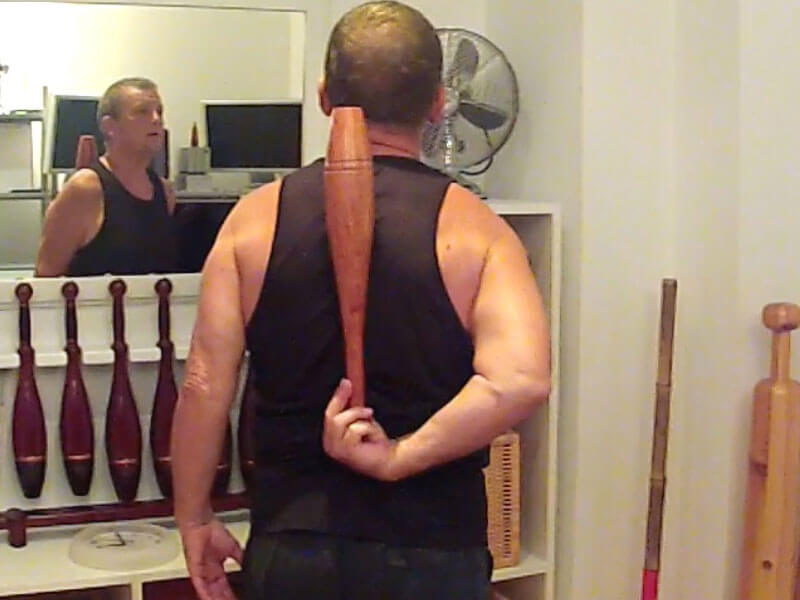
The Heart-Shape
The heart-shaped swing is made up of a large front circle and a small shoulder back circle. To perform a heart-shaped swing correctly you need to apply grip work using three grips, Sabre, Hammer and Ring grip (to a degree) which helps to make the movements seamless and fluid.
The Upside Down Heart-Shape
The upside-down heart-shaped swing is made up using a large front circle and a smaller hip back circle. To perform an upside-down heart shape swing you need to use the Sabre grip (elongated, ie further back towards the pommel) and the Claw grip for fluid movements. Your grip work in this instant is to change from sabre to claw grips, and back again.
Grip Work Tips
- Start to practice grip changes slowly, speed comes with memorising these grip changing motor skills.
- This takes time so be patient. You are entering the fascinating world of mental and physical gymnastics combined into one.
- The best clubs for grip work are 1lb or 2lb is ideal. Lengths 15” to 22” maximum
Rookie Mistakes
- Never lay your forefinger down the handle of a club for any other movements, this action exposes you to possible injury by dislocating your finger.
- Knob Swinging. Avoid swinging your clubs by just using the pommel, it may feel good but you are cheating yourself out of the benefits of grip work. It’s a bad habit.
- Lack of elevation in the front circle means you do not benefit from the full range of motion of your shoulder girdle. Throwing your clubs out to the sides is lazy.
- Do not use clubs that are too heavy.
Final words on Grip Work
The whole point of this tutorial is to encourage you to use grip work (continuous grip changes) when you swing your Indian Clubs and reap the benefits of your finger dexterity and forearm strength.
Grip work is incredibly satisfying to learn and put into an ongoing practice.
If you enjoyed this tutorial please comment, or suggest another subject that you would like me to cover in a new post.
